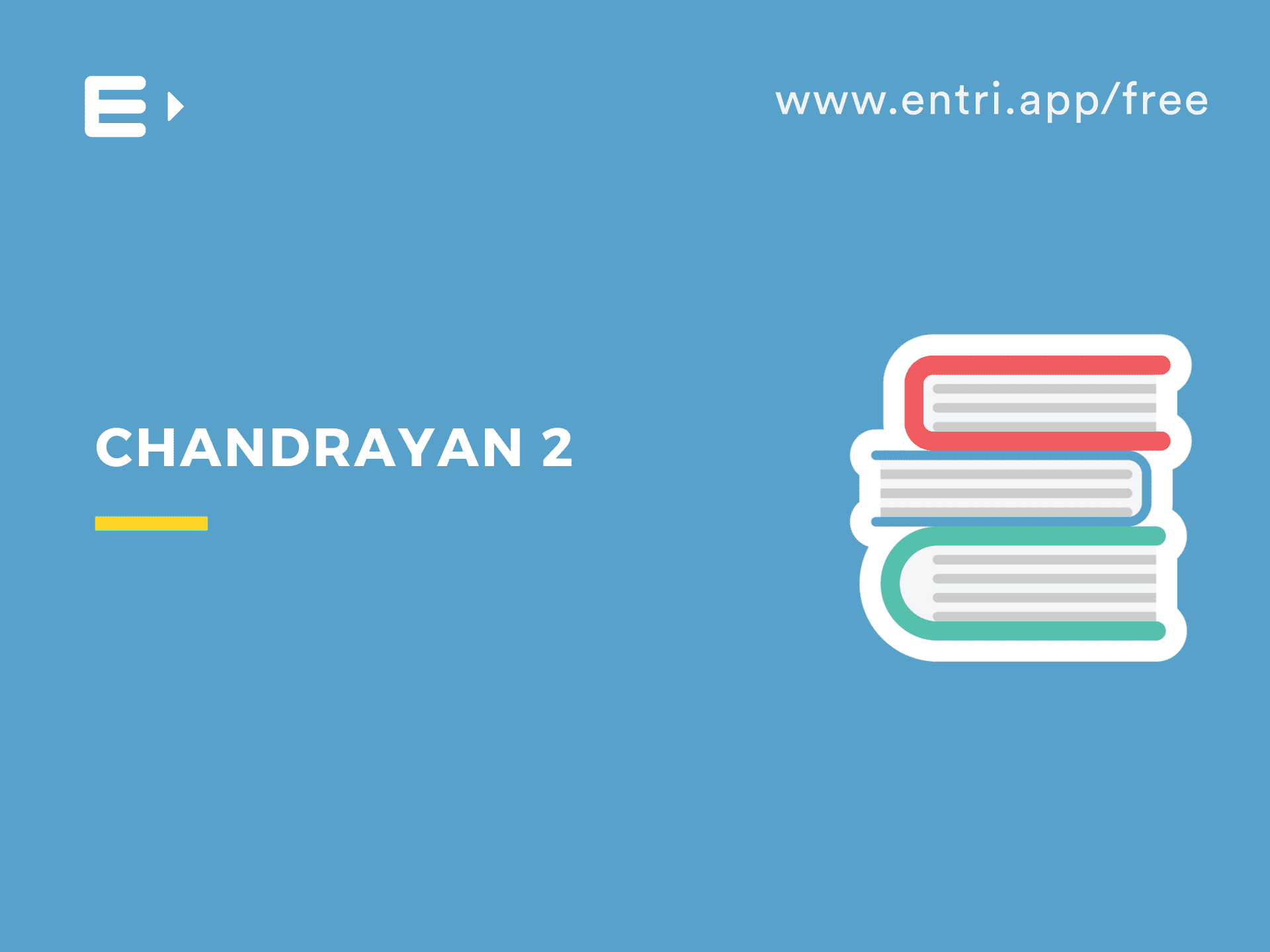Table of Contents
Chandrayaan 2 is an Indian lunar mission that will go to the Moon’s south polar region where no other country or space agency has ever gone before. If India does succeed in her mission, it will be the fourth country to land on the moon. The forerunners are erstwhile USSR, USA, and China. The South Pole of the lunar surface area remains in shadow for much larger than that at the North Pole of the Moon. The South Pole region has craters that are cold traps and contain a fossil record of the early Solar System. Possibility of the water present in the permanently shadowed areas of the South Pole makes the ISRO Chandrayaan 2 mission more interesting. Here we are bringing you all the details of the Indian Space Research Organisation(ISRO) Chandrayaan 2 mission to boost your knowledge.
Chandrayaan 1 was launched in October 2008. Chandrayaan 1 was an orbiting mission and after eight months in orbit, it ended his journey. Chandrayaan 1 confirms the exciting presence of water molecules on the lunar surface.
ISRO Chandrayaan 2 Mission
- Chandrayaan 2 is launched from Sriharikota on July 22, 2019.
- A first space mission to conduct a soft landing on the Moon’s south polar region.
- The first Indian expedition to attempt a soft landing on the lunar surface with home-grown technology.
- The first Indian mission to explore the lunar terrain with home-grown technology.
- The fourth country ever to soft-land on the lunar surface(USSR, USA, China).
- Launching Vehicle – Geosynchronous Satellite Launch Vehicle(GSLV), GSLV Mark III. GSLV Mk III is capable of launching 4-ton class of satellites to the Geosynchronous Transfer Orbit (GTO).
Click here to download free pdf of August current affairs: August 2019 Current Affairs
Vikram Lander and Orbiter
- An orbiter is a space probe that orbits a planet or other astronomical object.
- The Orbiter will observe the lunar surface and relay communication between Earth and the Vikram, Chandrayaan 2s Lander.
- The Chandrayaan 2 Orbiter will be capable of communicating with the Vikram Lander as well as the Indian Deep Space Network (IDSN) at Byalalu (Village in Karnataka).
- A lander is designed to descend toward and come to rest on the moon usually transporting something to the surface.
- The Lander of Chandrayaan 2 is named Vikram after Dr. Vikram A Sarabhai, the Father of the Indian Space Programme.
- It is designed to function for one lunar day(14 Earth Days).
- The Lander is designed to execute a soft landing on the lunar surface.
- On September 7, in the final 15 minutes of the lander’s descent on its own, the Indian Space Research Organisation (ISRO) lost contact with the module.
- Nights on the moon, (14 earth days), can be extremely cold, with temperatures in the region where Vikram has landed expected to go down as low as -200 degree Celsius. The electronics on Vikram are not designed to withstand such low temperatures and are likely to become non-functional.
- A rover is a space exploration vehicle designed to move and explore the surface of the moon.
- Chandrayaan 2 Rover is a 6-wheeled robotic vehicle named Pragyan, which translates to ‘wisdom’ in Sanskrit.
Facts about ISRO
1: Who was the first woman President of India?
- ISRO- Indian Space Research Organisation
- Headquarters – Bengaluru, Karnataka
- Founder- Dr. Vikram Sarabhai
- Director: Kailasavadivoo Sivan
- India’s first satellite – Aryabhatta
- The first satellite to be placed in orbit by an Indian-made launch vehicle(SLV-3) – Rohini
Entri wishes you all the best for your upcoming examinations.












